#christiane von goethe
Note
Let's talk about Christine Vulpius Babes!
Absolute Ikone, und wie ich finde immer noch kolossal unterschätzt. Vor ein paar Jahren habe ich eine Biographie zu ihr gelesen und sie sehr zu schätzen gelernt. Eine bodenständige, starke, interessante Frau, die mit/durch/wegen Goethe viel durchgemacht hat und ich finde es ein Verbrechen, dass sie immer noch nur in der Verbindung zu ihm erwähnt wird. Als wäre die Frau eine Vase im Gartenhaus! Wenn ich Arbeiten über ihren "sexuellen Einfluss auf Goethe" lese...boah. Igitt.
#JusticefürChristiane2023
Thoughts?
sehr gerne rede ich über christiane !! sie ist eine königin und ich liebe sie.
ich hoffe das buch, das du gelesen hast, war nicht christiane und goethe von sigrid damm ! oder generell von sigrid damm keine ahnung was madame noch über die beiden geschrieben hat aber ich möchte die chance hier mal nutzen und sagen dass es absoluter bullshit ist in jeder hinsicht (kann sein dass du die bücher gar nicht gelesen hast, sorry for derailing aber ich muss da schon länger drüber reden haha). ihre "recherche" ist keine recherche, die meisten sachen hat sie erfunden oder komplett aus dem kontext gerissen, damit es in ihr narrativ passt. z.b. christianes beruf: es hat sich mittlerweile als fakt etabliert, dass sie in der kunstblumenmanufaktur von bertuch gearbeitet hat, wofür es keine belege gibt. wir wissen nicht, wo christiane vor goethe gearbeitet hat. sigrid damm war die erste, die das geschrieben hat, und sie hat es so schlau verpackt, dass ich letztens sehr lange nach dem zu der these gehörigen "wahrscheinlich" suchen musste. es kam 10 seiten vorher. seitdem haben es sehr viele forscher:innen einfach bei ihr abgepinselt
am wütendsten macht mich die darstellung der briefe. jeder einzelne ist so gnadenlos aus dem kontext gerissen und mir ist klar, dass man in einem buch, in dem es um viele aspekte geht, nicht einfaxch den kompletten edierten briefwechsel reinhauen kann aber komm schon. in meinem praktikum hatte ich letztens das glück mir eine masse von briefen zwischen den beiden anschauen zu können und die waren allesammt so zuckersüß, dass ich fast vergangen bin. es sind so verdammt viele und das alles ja nur aus den kurzen zeiten, in denen die beiden nicht am selben ort waren. viele andere sind nicht mehr erhalten aber belegt (durch sendungsrechnungen oder durch antwortbriefe) und wie viele nicht erhalten und nicht rekonstruierbar sind ist halt auch noch die frage.
goethes briefe werden oft "kalt" genannt, was ich absolut nicht nachvollziehen kann. ja, alle schriftlichen dokumente ab den späten 1770ern/frühen 1780ern kann im vergleich zu seinen früheren sachen kalt nennen, weil er jetzt halt 30 ist und keine 5 ausrufezeichen hintereinander verwendet. viele der christiane briefe hat er nicht eigenhändig geschrieben, sondern einem schreiber diktiert, aber das war normal für goethe. die meisten seiner briefe waren von schreiberhand, weil sie laut seiner philosophie persönlicher waren. er konnte direkt vom herz aufs blatt "sprechen", wie er es in einer konversation von gesicht zu gesicht machen könnte, ohne, dass seine worte durch seine hand gebremst werden würden. idk about you aber ich find den gedanken super süß. sprachnachrichten aber als brief. dann gibts aber auch eigenhändige briefe und das sind meistens die, in denen er sehr private dinge schreibt, die selbst ein schreiber (der ja eigentlich alles mitkriegt) nicht unbedingt mitbekommen geschweige denn mitschreiben sollte. liebesbekundungen sind aber nicht nur auf die eigenhändigen briefe beschränkt. die meisten, die ich lesen durfte, haben mit einer liebeserklärung geöffnet, hatten liebeserklärungen im hauptteil und meistens einen ganzen absatz an liebeserklärungen vor der schlussformel, die für sich selbst auch nochmal eine liebeserklärung an sich war. und jede einzelne war zuckersüß. (die besten hab ich mir aufgeschrieben und mein notizbuch dann verloren aber wenn ichs wiederfinde werdet ihr euch davor nicht retten können). selbst die kürzesten briefe hatten eine liebevolle abschiedsformel. und natürlich sind briefe nicht alles aber wenn sie schon in briefen so miteinander sind?
ich unterschätze überhaupt nicht, was sie durchmachen musste. einerseits, weil goethe oft unterwegs war (was aber in anbetracht seiner position nicht ungewöhnlich viel war und er ist, wenn er z.b. in jena war, manchmal einfach für einen tag zurückgekommen weil er sie sehen wollte) und andererseits, weil er sie nicht geheiratet hat. das war natürlich scheiße von goethe, weil, so sehr er hier eine eigene lebensphilosophie hatte, musste er sich dessen bewusst sein, was es gesellschaftlich mit christiane machen würde und dass sie ab einem gewissen punkt (schwangerschaft) nicht mehr wirklich nein dazu sagen konnte, sondern sich auf seine ideen von wegen wir sind quasi verheiratet aber nicht offiziell einlassen musste (wobei es wahrscheinlich ist, dass sie sich vor ihrer schwangerschaft schon darauf eingelassen hat. zumindest haben die beiden ihren hochzeitstag immer zum jubiläum von einigen tagen nach ihrem ersten treffen gefeiert. inwiefern das jetzt was aussagt sei dahingestellt).
mein punkt hier ist dass es natürlich eine beschissene entscheidung war (von der wir allerdings nicht wissen inwiefern christiane ein problem oder auch kein problem damit hatte) aber was sie eigentlich durchmachen musste, war nicht wegen oder durch goethe, sondern direkt wegen und durch die höfische kultur und die damalige gesellschaft. sie wurde komplett dämonisiert und ausgegrenzt, weil alle sie nur als mätresse goethes gesehen haben, die ein uneheliches kind von ihm hatte. und das alles ist super schrecklich und sie tut mir unfassbar leid dafür, aber es wäre realistisch gesehen auch nicht viel besser geworden, wenn sie geheiratet hätten. ein bisschen natürlich, aber sie war "von niederem stand" und wäre den ganzen lästereien was uneheliche kinder etc. anging aus dem weg gegangen, hätte aber ganz neue probleme gehabt. also ja, goethe hat absplut nicht perfekt gehandelt, aber er hat sie geliebt, er war oft gut zu ihr, sie hat ihn offensichtlich geliebt und die größten leiden kamen von außen. deswegen finde ich es absolut nicht fair goethe so zu verurteilen was das angeht.
arbeiten, die sie nur als objekt betrachten, finde ich absolut anwidernd, passiert aber (LEIDER !!) mit vielen frauen in der forschung, vor allem in der goethe forschung. keine ahnung wer festgelegt hat, dass wir goethe als sexikone ansehen sollten und sein ganzes leben in richtung sex analysieren sollten. das verhalten der "wissenschaft" oder gesellschaft generell gegenüber den frauen in seinem leben ist ekelhaft. alle von ihnen hätten besseres verdient (behandelt zu werden wie menschen for once), auch christiane (oder vor allem christiane, weil sie auf jeden fall zu denen gehört, die am meisten davon abkriegen).
allerdings kann ich verstehen, dass sie nur in verbindung mit goethe erwähnt wird. sowas macht mich eigentlich sehr sauer, wenn zum beispiel caroline böhmer-schlegel-schelling nur in bezug auf ihre männer erwähnt wird, als hätte sie nicht einen beitrag zur literatur geleistet. oder bei caroline von wolzogen, die eigene literarische werke verfasst hat und nicht nur als schillers schwägerin besprochen werden sollte. bei christiane von goethe ist halt das problem ("problem"), dass man sie wirklich nicht kennen würde, wenn sie nicht goethes frau wäre. sie hat nichts geschrieben, nichts gemalt, nichts erfunden, nichts entdeckt. und das ist nicht schlimm. es wertet sie nicht ab. sie war hausfrau, eine sehr gute und sehr liebende. aber wäre sie die hausfrau von johann-christian müller aus möhrendorf würden wir nunmal nicht über sie reden, was natürlich schade wäre, weil christiane ein engel ist und ein toller mensch, aber wer weiß ob anna-elisabeth müller aus möhrendorf, frau von johann-christian müller, das nicht auch war.
ich bin froh, dass wir christiane heute noch kennen und heute noch über sie reden, weil ich sie sehr liebe. aber, um mit ihren worten abzuschließen:

#bitte mobbt mich nicht wegen dem foto meine kamera hat leider immernoch einen riss#ig es schließt nicht mit ihren worten ab sondern mit einer paraphrase ihrer worte#christiane vulpius#christiane von goethe#goethe
8 notes
·
View notes
Text
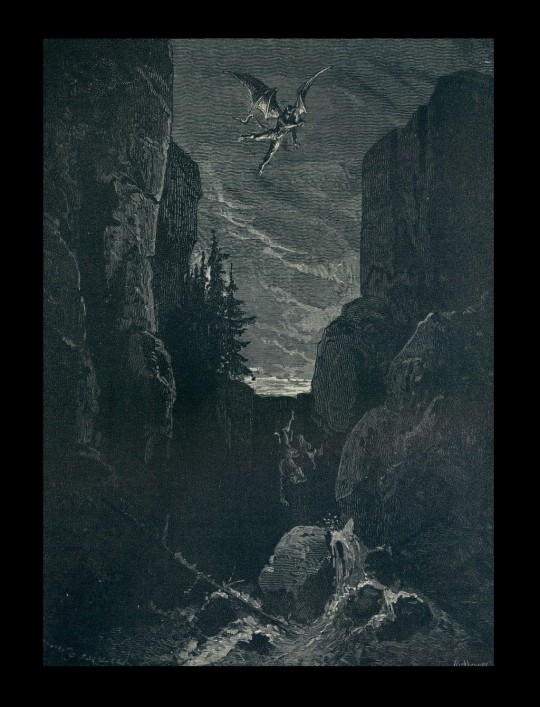
#art#faust#johann wolfgang von goethe#mephistopheles#Émile Bayard#paul christian#Histoire de la Magie#Du Monde Surnaturel Et de la Fatalite a Travers Les Temps
204 notes
·
View notes
Text
I like to think that Goethe and Schiller were secretly married.
#johann wolfgang von goethe#friedrich schiller#schoethe#literary husbands#they were totally a couple#christiane and charlotte were just the beards#novalis’s slander#novalis speaks
13 notes
·
View notes
Text
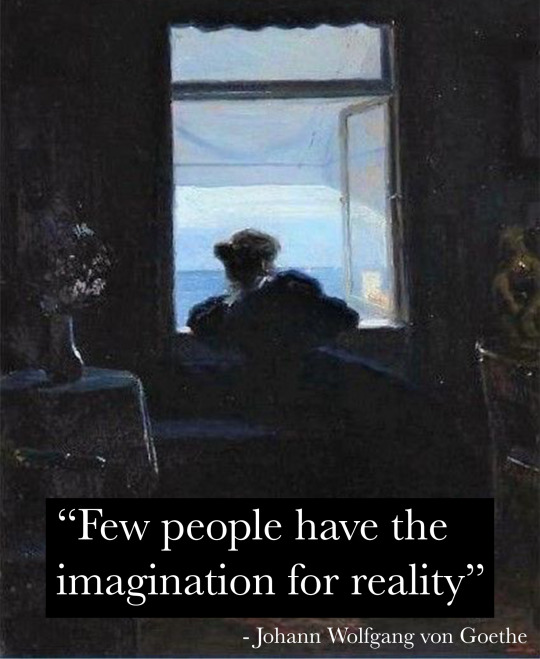
"Few people have the imagination for reality" — Johann Wolfgang von Goethe
Painting: "Interior with a woman looking out the window" by
Christian Valdemar Clausen
#classical literature#quotes#sylvia plath#classical quotes#literature#booklr#poetry#franz kafka#albert camus#classics#goethe#romanticism#freidrich nietzsche#nietzche#beethoven#booklover#books#book quotes#books & libraries#bookblr#reading#books and reading#dark academia quotes#dark acamedia#lit#classic literature#literary quotes#quote#words#letters
14 notes
·
View notes
Text
This is Goethe's first novel, published in 1774. Written in diary form, it tells the tale of an unhappy, passionate young man hopelessly in love with Charlotte, the wife of a friend - a man who he alternately admires and detests. 'The Sorrows of Young Werther' became an important part of the 'Sturm und Drang movement, and greatly influenced later 'Romanticism'. The work is semi-autobiographical - in 1772, two years before the novel was published, Goethe had passed through a similar tempestuous period, when he lost his heart to Charlotte Buff, who was at that time engaged to his friend Johann Christian Kestner.

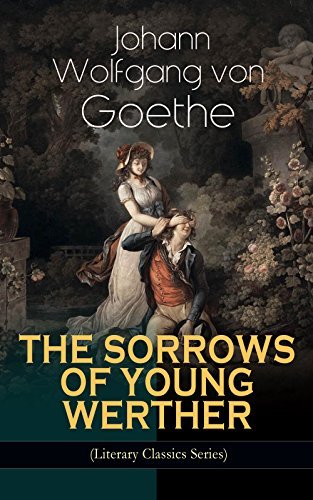
#book: the sorrows of young werther#author: johann wolfgang von geothe#genre: classics#genre: german literature#genre: romance#year: 1700s
14 notes
·
View notes
Text
Hallo meine Mäuschen,
und schon sind wir im Viertelfinale! Ich machs kurz: Polls starten heute, wie immer um 18:00, die einzelnen Matchups und alle Teilnehmer unter dem Cut. Viel Spaß!
Viertelfinale
1:
Ernst Jandl: Markierung einer Wende
Heinrich Heine: Die schlesischen Weber
2:
Paul Celan: Todesfuge
Theodor Fontane: John Maynard
3:
Rainer Maria Rilke: Der Panther
Danger Dan: Das ist alles von der Kunstfreiheit gedeckt
4:
Mascha Kaléko: Interview mit mir selbst + Post Scriptum
Erich Kästner: Sachliche Romanze
Teilnehmer:
Rainer Maria Rilke: Der Panther
Heinrich Heine: Lied von den schlesischen Webern
Paul Celan: Todesfuge
Unbekannt/Volkstümlich: Dunkel war's, der Mond schien helle
Erich Kästner: Sachliche Romanze
Anette von Droste-Hülsoff: Der Knabe im Moor
Bertolt Brecht: An die Nachgeborenen
Eduard Mörike: Er ist's
Theodor Fontane: John Maynard
Hilde Domin: Nicht müde werden
Zoran Drvenkar: es müssen nicht flügel sein
Theodor Storm: Die Stadt
Joachim Ringelnatz: Die Ameisen
Joseph von Eichendorff: Mondnacht
Rose Ausländer: Noch bist du da
Christian Morgenstern: Der Werwolf
Friedrich Schiller: Das Lied von der Glocke
Johann Wolfgang von Goethe: Prometheus
Mascha Kaléko: Interview mit mir selbst + Post Scriptum
Ernst Jandl: Markierung einer Wende
Conrad Meyer: Die Füße im Feuer
Kurt Tucholsky: Danach
Danger Dan: Das ist alles von der Kunstfreiheit gedeckt
Nora Bossong: Leichtes Gefieder
Karoline von Güderrode: Ein apokaliptisches Fragment
Wizo: Raum der Zeit
Yoko Tawada: Die zweite Person Ich
Marie Luise Kaschnitz: Geschwister
Hermann Hesse: Im Nebel
Christine Lavant: [Sag mir ein Wort, und ich stampfe dir...]
Ingeborg Bachmann: Alle Tage
Emerenz Me
21 notes
·
View notes
Text
Deutschribing Germany
Literature
Middle Ages (5th-15th centuries)
Medieval German literature can be divided into two periods: Old High German literature (8th-11th centuries) and Middle High German literature (12th-14th centuries). The only surviving works from the first period are the Hildebrandslied (Lay of Hildebrand), which is the earliest poetic text in German and tells of the tragic encounter in battle between a father and a son, and Muspilli, which deals with the fate of the soul after death and at the Last Judgment.

Middle High German literature saw a 60-year golden age known as mittelhochdeutsche Blütezeit, in which lyric poetry in the form of Minnesang—the German version of courtly love—blossomed thanks to poets such as Walther von der Vogelweide and Wolfram von Eschenbach. Another important genre during this time was epic poetry, of which the most famous example is the Nibelungenlied (The Song of the Nibelungs), which narrates the story of prince Siegfried and princess Kriemhild, among other characters.
Renaissance (15th-16th centuries)
Early New High German literature includes works such as Der Ring (The Ring) by Heinrich Wittenwiler, a 9,699-line satirical poem where each line is marked with red or green ink depending on the seriousness of the material, and Das Narrenschiff (Ship of Fools) by Sebastian Brant, a satirical allegory that contains the ship of fools trope.
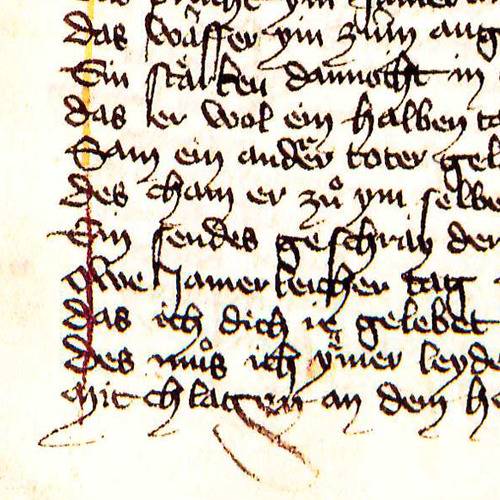
Other important authors are satirist and poet Thomas Murner, humanist Sebastian Franck, and poets Johannes von Tepl and Oswald von Wolkenstein.
Baroque (16th-17th centuries)
The Baroque period is characterized by works that reflected the experiences of the Thirty Years’ War and tragedies (Trauerspiele) on Classical themes, the latter were written by authors such as Andreas Gryphius and Daniel Caspar von Lohenstein. The most famous work is Der abenteuerliche Simplicissimus (Simplicius Simplicissimus) by Hans Jakob Christoffel von Grimmelshausen, a picaresque novel that narrates the adventures of the naïve Simplicissimus.
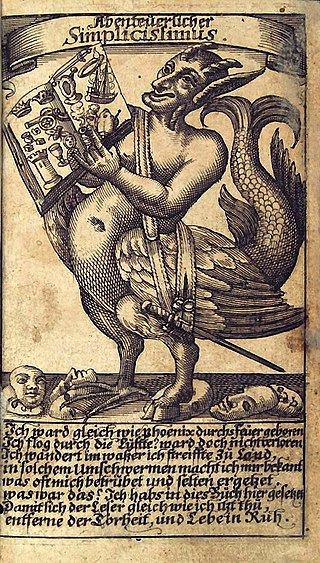
Enlightenment (17th-18th centuries)
The most important writers of the Enlightenment are Christian Felix Weiße, Christoph Martin Wieland, Gotthold Ephraim Lessing, and Johann Gottfried Herder.
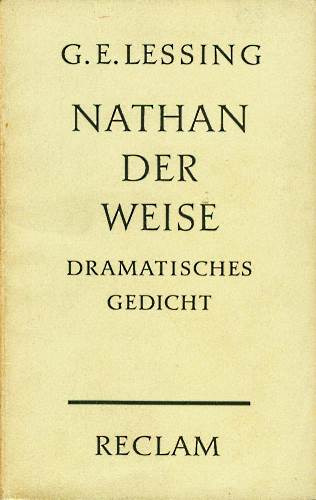
The Age of Reason saw the emergence of two literary movements: Empfindsamkeit (sentimental style) and Sturm und Drang (storm and stress). The first one intended to express true and natural feelings and featured sudden mood changes. The latter movement was characterized by individual subjectivity and extremes of emotion in response to the rationalism imposed by the Enlightenment.
Weimar Classicism (18th-19th centuries)
The main drivers behind Weimar Classicism, which synthesized ideas from Classicism, the Enlightenment, and Romanticism, were Johann Christoph Friedrich von Schiller, and Johann Wolfgang von Goethe.
During this period, Schiller published Die Bürgschaft (The Pledge), a ballad based on the legend of Damon and Pythias found in the Latin Fabulae, and Don Karlos (Don Carlos), a historical tragedy about Carlos, Prince of Asturias, while Goethe wrote Egmont, a play heavily influenced by Shakespearean tragedy, and Faust, a tragic play in which the main character sells his soul to the devil that is considered the greatest work of German literature.
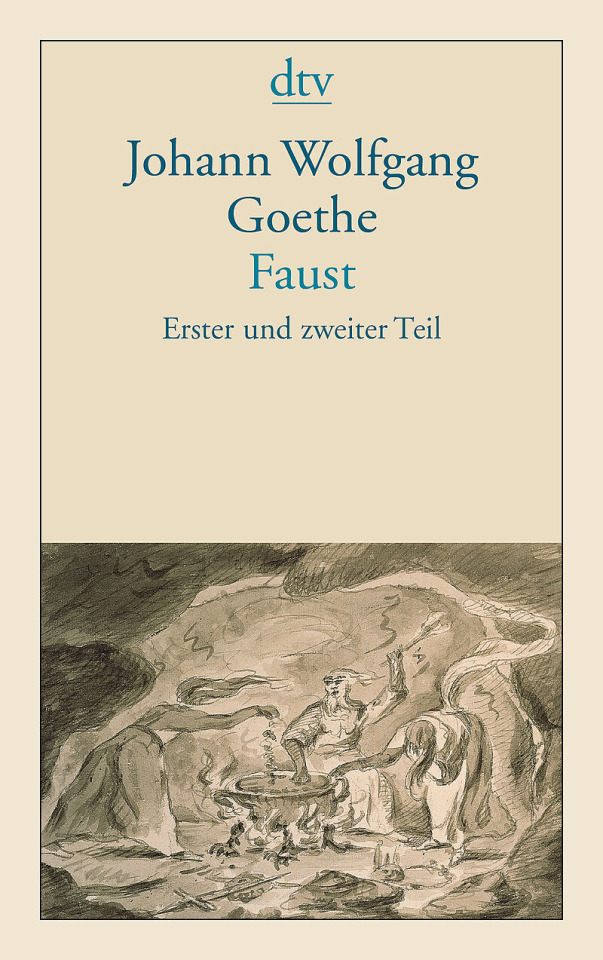
Romanticism (18th-19th centuries)
Important Romantic writers include E. T. A. Hoffmann, author of Der Sandmann (The Sandman), a short story based on the mythical character of said name that puts people to sleep by sprinkling sand on their eyes; Heinrich von Kleist, who wrote Das Kätchen von Heilbronn (The Little Catherine of Heilbronn), a drama set in Swabia in the Middle Ages; Joseph Freiherr von Eichendorff, author of Das Marmorbild (The Marble Statue), a novella about a man who struggles to choose between piety and a world of art, and Novalis, author of Hymnen an die Nacht (Hymns to the Night), a collection of six poems.

Folk tales collected by the Brothers Grimm became very popular during the Romantic period, as they represented a pure form of national literature and culture.
Biedermeier and Young Germany (19th century)
The Biedermeier period contrasts with the Romantic era and is best exemplified by poets Adelbert von Chamisso, Annette von Droste-Hülshoff, and Wilhelm Müller.
Young Germany was a youth movement whose main proponents were Karl Gutzkow, Ludolf Wienbarg, and Theodor Mundt.
Realism and Naturalism (19th century)
The most representatives realist authors are Gustav Freytag, Theodor Fontane, and Theodor Storm, while Gerhart Hauptmann was the most important naturalist writer.
Weimar literature (20th century)
During the Weimar Republic, writers such as Erich Maria Remarque, Heinrich Mann, and Thomas Mann presented a bleak look at the world and the failure of politics and society.

Expressionism (20th century)
As a modernist movement, Expressionism presented the world solely from a subjective perspective, distorting it for emotional effect. Famous authors include novelists Alfred Döblin and Franz Kafka, playwrights Ernst Toller and Georg Kaiser, and poets August Stramm and Else Lasker-Schüler.

Neue Sachlichkeit (20th century)
Neue Sachlichkeit (New Objectivity) arose as a reaction against expressionism and was characterized by its political perspective on reality and portrayal of dystopias in an emotionless reporting style, showing cynicism about humanity. Authors associated with this movement include Erich Kästner, Hans Fallada, and Irmgard Keun.
Nazi Germany (1933-1945)
During the Nazi regime, some authors went into exile, while others submitted to censorship. The former, who either were of Jewish ancestry or opposed the regime for political reasons, include writers Alice Rühle-Gerstel and Anna Seghers, playwright Bertolt Brecht, and poet and novelist Hermann Hesse/Emil Sinclair.
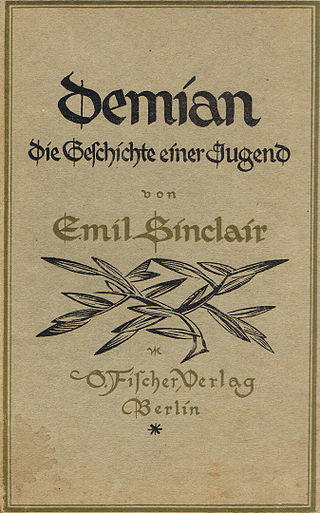
Those who stayed and engaged in inner emigration include writer Friedrich Reck-Malleczewen, poet and essayist Gottfried Benn, writer Hans Blüher, and poet and novelist Ricarda Huch.
Post-war literature (20th century)
The most famous authors in West Germany were Edgar Hilsenrath, Günter Grass, Heinrich Böll, and Group 47, a group of participants in writers’ meetings invited by Hans Werner Richter.
East German writers include Christa Wolf, Heiner Müller, Reiner Kunze, and Sarah Kirsch.
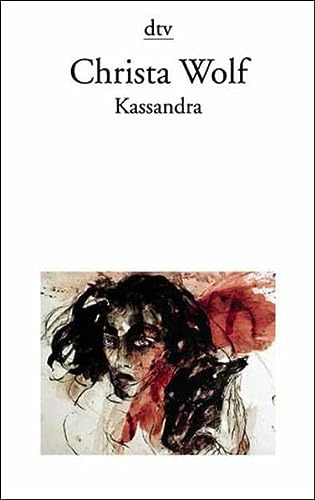
Contemporary literature (21st century)
Fantasy and science fiction authors include Andreas Eschbach, Frank Schätzing, and Wolfgang Hohlbein. Some of the most important poets are Aldona Gustas, Hans Magnus Enzensberger, and Jürgen Becker. Thriller is best represented by Ingrid Noll. Fiction novelists include Herta Müller, Siegfried Lenz, and Wilhelm Genazino.
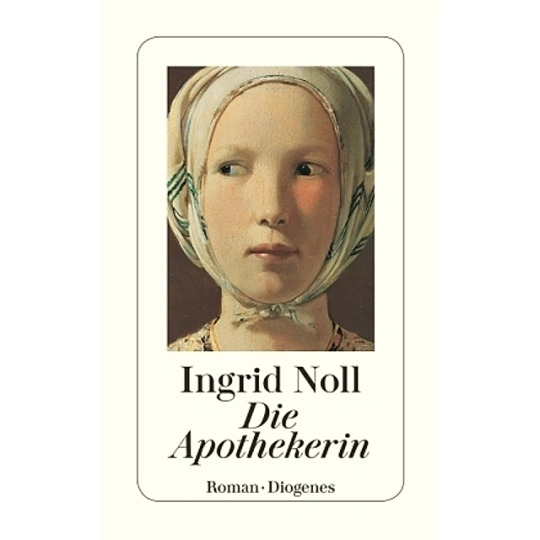
20 notes
·
View notes
Text
Things I just learned about Pope John Paul I, who I previously only knew because of my mother’s childhood memories of him dying shortly after her school made a big deal of him being elected:
In October of 1971, then-bishop Albino Luciani gave a speech in which he proposed the world’s wealthiest nations give 1% of their annual incomes to developing countries “not as alms but something that is owed them” - owed to them because of the colonialism that made the rich nations rich at the expense of the colonized.
He sold a golden cross that Pope John XXIII had gifted him, using the money to fund programs that aided disabled children.
In a 1978 interview after the first successful birth of a baby conceived via in vitro fertilization, he simultaneously declared such methods of conception to be illicit and with dangerous implications, while also giving his blessing to the baby and refusing to condemn the parents.
He wrote and published a series of essays on Christian living, but framed them as letters written to famous people and fictional characters. Among the ‘recipients’ of such letters were King David, Johann Wolfgang von Goethe, Pinocchio, Mark Twain, and Teresa of Avila.
192 notes
·
View notes
Text
In the Buddhistic and ancient Christian books we read stern predictions about the time when the war between the good and evil spirits must begin. Then there must come the unknown ‘Curse’ which will conquer the world, blot out culture, kill morality and destroy all the people. Its weapon is revolution. During every revolution the previously experienced intellect-creator will be replaced by the new rough force of the destroyer. He will place and hold in the first rank the lower instincts and desires. Man will be farther removed from the divine and the spiritual. The Great War proved that humanity must progress upward toward higher ideals; but then appeared that Curse which was seen and felt by Christ, the Apostle John, Buddha, the first Christian martyrs, Dante, Leonardo da Vinci, Goethe and Dostoyevsky. It appeared, turned back the wheel of progress and blocked our road to the Divinity. Revolution is an infectious disease and Europe making the treaty with Moscow deceived itself and the other parts of the world. The Great Spirit put at the threshold of our lives Karma, who knows neither anger nor pardon. He will reckon the account, whose total will be famine, destruction, the death of culture, of glory, of honor and of spirit, the death of states and the death of peoples. I see already this horror, this dark, mad destruction of humanity.
― Baron Roman Von Ungern-Sternberg
6 notes
·
View notes
Photo

Blue colour is everlastingly appointed by the deity to be a source of delight.
- John Ruskin
Blue is an extremely dynamic colour in the art world because it calls upon the natural world while overlapping with intense emotions.
According to psychologists, the popularity of the hue may take root in our evolutionary development. In the hunting-and-gathering days, those drawn to positive things - like, say, clear skies and clean water - were more likely to survive, and, over time, this preference for the color blue may have become hard-wired.
Yet, scientifically speaking, the sky and the oceans aren’t really blue - or at least not in the same way the soil is brown or leaves are green. This posed a big problem for most of art history. You can’t take the blue of the sky, grind it up with a mortar and pestle, then throw it on a canvas. Unlike certain reds, browns, and yellows, blue pigment isn’t quite as easily made.
Found in small supply and sought after voraciously, blue pigments carry a rich history of scientific invention, global trade, and artistic workarounds.
Lapis Lazuli is a beautiful, deep-blue stone which has been highly valued for centuries. Evidence for its use as a pigment has been found as early as 2,200 B.C.E. in Ancient Egypt. At the end of the Middle Ages, lapis lazuli was ground into a powder to make ultramarine, a very expensive blue pigment which became popular during the Renaissance and Baroque periods. Furthermore, as blue has long been associated with the heavens in Christianity, ultramarine was used extensively in portrayals of the Virgin Mary.
German writer and politician Johann Wolfgang von Goethe was first inspired to pursue the study of colour during a trip to Italy, where he realised that artists were able to analyse all the elements of their paintings except for colour. He published his Theory of Colours in 1810, which outlined the wheel of complementary colours for the first time, pairing blue together with orange. The theory was widely adopted in the art world, most notably studied in depth by J.M.W. Turner and Kandinsky.
Impressionists were particularly fond of representing in shadows in a blue hue. While previous artists portrayed shadows as a shade of grey, many impressionists such as Monet and Renoir noticed that the blue of the sky reflects onto white surfaces that are under shadow, an effect that can be seen most clearly on snow. This brought brightness and depth to paintings, helping to capture the moods and emotions that impressionists are so well-known for.
Perhaps the most famous artists identified with the colour blue was Pablo Picasso and his so-called ‘Blue Period’. From 1900 to 1904, Picasso had his ‘Blue Period’, triggered by the suicide of his friend Carlos Casagemas. This uses a cool and sombre shade of blue to reflect the despair of his subjects. During this time, he often painted social outsiders such as prisoners, circus people or poor people. In 1901, at twenty years old, he painted his own self-portrait.
As science advances, new blue pigments are being created. For example, in 2009, researchers at Oregon State University accidentally discovered “YInMn Blue” pigment while heating chemicals in search new materials for electronics. They received significant interest from art restorers, because the pigment is similar to ultramarine from the lapis lazuli rock, but is more durable. Unlike ultramarine, which fades over time, the YInMn blue pigment is highly durable, with no change in the colour when exposed to high temperatures, water, or mildly acidic and alkaline conditions.
Overall, we’ve seen that blue can be made by rocks, plants, chemicals or light. It can be used on canvas, wood, water or naked bodies. It can be seen as bright, sad, sacred, or calm.
102 notes
·
View notes
Text
Literary Canon (from kissgrammar)
The Holy Bible, Authorized King James Version [At a minimum, the books of Genesis, Exodus, Job, Psalms, from the Old Testament; Matthew, Mark, Luke, John, and Apocalypse from the New.] Whether or not you are Christian is irrelevant. The civilization in which we live is based on and permeated by the ideas and values expressed in this book. Understanding our civilization, the world in which we live, is probably impossible without having read -- and thought about -- at least the most famous books in the Bible. Historically, the King James Version is considered the most artistic, and thus has probably had the most literary influence.
Homer, The Iliad
Homer, The Odyssey
Sophocles, Oedipus the King (Oedipus Rex)
Sophocles, Antigone
Plato, The Republic, especially "The Myth of the Cave"
Ovid, Metamorphoses
Saint Augustine, The Confessions
Dante, The Divine Comedy
Giovanni Boccaccio, The Decameron
Niccolo Machiavelli, The Prince
Giambattista Vico, Principles of a New Science
Miguel de Cervantes, Don Quixote
Geoffrey Chaucer, The Canterbury Tales
Romeo and Juliet
King Lear
Hamlet
Othello
Macbeth
John Donne, "Holy Sonnet XIV"
John Donne, "A Valediction Forbidding Mourning"
Andrew Marvell, "To His Coy Mistress"
John Milton, Paradise Lost
Jonathan Swift, Gulliver's Travels
A Modest Proposal
Daniel Defoe, Robinson Crusoe
Laurence Sterne, The Life and Opinions of Tristram Shandy, Gentleman
Michel de Montaigne, Essays, especially "Of Experience"
Francois Rabelais, Gargantua and Pantagruel
Moliere, The Misanthrope
Blaise Pascal, Pensees
Jean-Jacques Rousseau, Emile
Voltaire, Candide
Erasmus, In Praise of Folly
Johann Wolfgang von Goethe, Faust, Parts One & Two
Honore de Balzac, Old Goriot (also translated as Pere Goriot)
Stendhal, The Red and the Black
Gustave Flaubert, Madame Bovary
Emile Zola, Germinal
Henrik Ibsen, A Doll's House
William Blake
William Wordsworth
Jane Austen, Pride and Prejudice
Lord Byron, Don Juan
John Keats, "Ode on a Grecian Urn"
Robert Browning, "My Last Duchess"
Charles Dickens - Oliver Twist
A Tale Of Two Cities
Hard Times
A Christmas Carol
Matthew Arnold, "Dover Beach"
John Stuart Mill, On Liberty
Lewis Carroll, Alice in Wonderland
Charlotte Bronte, Jane Eyre
Emily Bronte, Wuthering Heights
Francis Thompson, "The Hound of Heaven"
Samuel Butler, Erewhon
Oscar Wilde, The Picture of Dorian Gray
George Eliot- Silas Marner
Middlemarch
Robert Louis Stevenson, Dr. Jekyll and Mr. Hyde
Friedrich Nietzsche - Beyond Good and Evil
The Will To Power
The Birth of Tragedy
On the Genealogy of Morals
Alexander Pushkin - Eugene Onegin
The Bronze Horseman
Nikolai Gogol -The Overcoat
Dead Souls
Mikhail Lermontov, A Hero of Our Time
Ivan Turgenev, Fathers and Sons
Fyodor Dostoevsky -Notes From the Underground
Crime and Punishment
Leo Tolstoy -The Death of Ivan Ilych
War and Peace
Anton Chekhov, The Cherry Orchard
James Fenimore Cooper, The Deerslayer
Ralph Waldo Emerson, Essays
Emily Dickinson - "Because I Could Not Stop For Death"
"The Tint I Cannot Take"
"There's a Certain Slant of Light"
Walt Whitman - "Song of Myself"
"The Sleepers"
"Crossing Brooklyn Ferry"
"As I Ebbed With The Ocean of Life"
"Out of the Cradle Endlessly Rocking"
"When Lilacs Last in the Dooryard Bloomd"
Nathaniel Hawthorne - Young Goodman Brown
The Scarlet Letter
Herman Melville, Moby-Dick
Edgar Allen Poe - "The Raven"
The Cask of Amontillado
Henry David Thoreau, Walden
Kate Chopin -The Story of An Hour
The Awakening
Stephen Crane, The Red Badge of Courage
Henry James
Mark Twain, The Adventures of Huckleberry Finn
Luigi Pirandello
5 notes
·
View notes
Text
Flake interview 2017 profil (austria)
published 2017-10-23, by Philip Dulle
Flake von Rammstein: "We are not machine people"
Rammstein keyboard player Flake on the end of the big party and his new book of memories.
There is a saying that circulates about the Rammstein phenomenon: the Berlin band has done more for the German language in the past 23 years than the Goethe-Institut has done since it was founded. On social media you can read about fans who only learned German thanks to the six musicians from the former GDR. Whether in São Paulo, Sydney or Paris - everywhere people sing along almost flawlessly when singer Till Lindemann lets his baritone sound. In 2010, the band sold out their concert in New York's Madison Square Garden, probably the most famous arena in the world, in just 20 minutes.
For the Berlin author and radio presenter Marion Brasch, who knows Rammstein very well, the phenomenon is easy to explain: "Despite their superficial brutality, they make beautiful music," she says in an interview with profil. "These are great melodies that touch, even though they come across so fiercely.” In addition, the concerts are an experience without equal - “like a beautiful, colourful, evil children's birthday party”: a perfectly staged spectacle with fire throwers, SM role-playing games and absurd theatrics.
Rammstein keyboardist Christian Lorenz, who has called himself Flake since his youth, is not only his band's prankster on stage, he also has the ability to write wonderfully strange books. After his GDR memoirs ("The Key Fucker", 2015) , the now 50-year-old has now succeeded in creating another gem of oddities, which he cleverly disguised as a memoir for musicians, about the difficult early days of an often misunderstood East ("Ossi") band, but also deals with existential questions.
profile: After decades in the music business, you still don't like giving interviews. Has that never improved?
Flake: We make music that should speak for itself. When I have to explain why a song is written this way or that way, the song obviously doesn't work. That would be like explaining a joke.
profile: You are going on a reading tour with your new book. Can you compare that to a concert?
Flake: I find a reading to be a greater challenge. I'm alone on stage, without costumes and make up, sometimes I feel naked. A band overwhelms with volume, show and rhythm. These resources are not available to me at a reading.
profile: Aren't you happy with your readings?
Flake: It's comparatively difficult for me. Reading is a very intimate thing, not a fun event.
profile: You wrote a kind of band biography with "Today has the world's birthday" after all.
Flake: For me the book is not a Rammstein biography, I would rather categorize it as a novel. In it we accompany a band on a fictional day. The big stuff isn't more important than the small, and being presented with a platinum record as an artist means little to me when I am om stage and need to pee urgently.
profile: How do you explain the success of Rammstein?
Flake: The most important thing after all these years is that we get along well within the band and have learned to deal with each other. We don't argue about financial matters, we don't allow ourselves to be interfered with and we don't let ourselves be destroyed from the outside. As a band we stand together. That's the trick. An elbow society, where everyone fights everyone else, is the wrong way to go if you want to be happy or successful in life.
profile: Do you still wonder about the music business?
Flake: For outsiders it's completely absurd what musicians do all day. They hang out in backstage rooms, shaking hands with thousands of fans like a machine, every day. You can't even tell all that.
profile: In your book, the Rammstein machine noticeably begins to become human. Intentional?
Flake: We're not machine people who just work dull and stubborn, punctual to the second. I try to invite readers into our world, and that only works when you're dealing with people who are close to you.
profile: You talk frankly about escapades and backstage parties. How did that go down with your colleagues?
Flake: They see it very differently. But the escapades weren't really the problem. Everyone has their own story about what happens.
profil: Has the band lost its attraction for you with the success?
Flake: You lose and you gain something, it's similar to a long relationship. At the beginning you are in love, there is total euphoria. Then come the wedding, everyday life and children, you reap the fruits. Suddenly you find yourself on a new level in the relationship. That's exactly how it is with the band. It has nothing to do with sadness.
profile: Today you prefer to watch "House of Cards"?
Flake: I don't have that much fun with lavish parties and drinking all night long anymorre. I prefer to go to bed early.
profile: Do you have a life besides music?
Flake: Especially people who are crazy about their music have a hard time in life. These are often the ones who get into a big crisis when things aren't going so well. I'm really only a musician on stage - and besides the band I have a completely normal private life.
profile: Rammstein concerts are spectacles. Between the fire show and stage dramaturgy, isn't there a lack of engagement with the music?
Flake: I can reassure you: I'm totally into the songs for the whole two hours and feel the music. The show is the accessory.
profil: Are you pursuing a higher goal with the band?
Flake: I believe that we have helped many people in life, given them self-confidence. In our early years, we sometimes received letters from abuse victims who, through Rammstein, for the first time dared to talk about their trauma and go to the police. Music is also a tool that helps you distance yourself from your parents and cut your cord.
profile: People around the world are learning German because of Rammstein. Does that honor you?
Flake: Not only that. Germany is also seen differently because of us. In many countries, people started to think about Germany because we happened to play a concert there.
20 notes
·
View notes
Photo
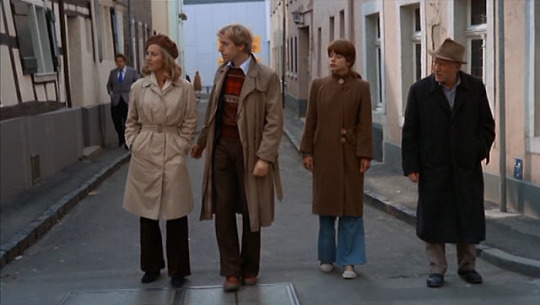
Peter Kern, Hanna Schygulla, Rüdiger Vogler, Nastassja Kinski, Hans Christian Blech in Wrong Move (Wim Wenders, 1975)
Cast: Rüdiger Vogler, Hans Christian Blech, Hanna Schygulla, Nastassja Kinski. Peter Kern, Ivan Desny, Marianne Hoppe, Lisa Kreuzer. Screenplay: Peter Handke, based on a novel by Johann Wolfgang von Goethe. Cinematography: Robby Müller. Film editor: Peter Przygodda.
With his presence in Alice in the Cities (1974), Wrong Move, and Kings of the Road (1976) Rüdiger Vogler became as essential to Wim Wenders's films of the mid-1970s as Robert De Niro was to Martin Scorsese's work in the late 1970s and the 1980s. His homely everyman face is perfect for the self-centered loners of the first and the third films in Wenders's "road trilogy," men who find themselves having to come to terms with a world -- or at least a Germany -- they can't fully accept. But Vogler feels miscast in the middle film -- too old to be playing the young writer out to discover himself, a character drawn by screenwriter Peter Handke from Goethe's Wilhelm Meister's Apprenticeship and thrust into modern post-Nazi, post-Wirtschaftswunder Germany. There is no naïveté left in Vogler's face, there are no illusions to be lost. Yet Wenders sends his 30-year-old Wilhelm on the voyage from northern to southern Germany, from Glückstadt to the Zugspitze, and into encounters with the world of art and politics that might have disillusioned a 20-year-old. Which is not to say that Wrong Move is a failure. It remains a film that tantalizes with its non-realistic narrative, its sense of a world grown alien to people who think and feel, and of a country haunted by its desperation to escape from a terrible history. No surprise that a good part of its dialogue consists of people telling one another of their dreams, for the film itself has a liminal dreamlike quality. Would a fully awake and aware Wilhelm really pay the train fare for the con artist Laertes (Hans Christian Blech) and his mute traveling companion Mignon (Nastassja Kinski)? Do people really fall in love when their eyes meet between trains traveling on different tracks, and then somehow manage to get together after all? Do strangers really decide to travel together and wind up by mistake in the mansion of a suicidal industrialist? Or does all of that happen only in dreams? Wenders's film is touched by the mysterious angst that afflicts the characters in Antonioni's films -- the scene in the concrete caverns of Frankfurt evokes the bleak modern Rome of a film like L'Eclisse (1962), for example. In the context of a film so beautifully shot, so eccentrically put together as Wrong Move, even the miscasting of Vogler feels like not so much a mistake as a provocation.
#Wrong Move#Wim Wenders#Peter Kern#Hanna Schygulla#Rüdiger Vogler#Nastassja Kinski#Hans Christian Blech
4 notes
·
View notes
Text
23 books for 2023
Thanks to @booksnpictures <3 I came up with my list of 23 books I plan to read in 2023. To be fair, I am more of a mood reader and I prefer to pick my next read according to that. So let’s see if I’ll get through it. Maybe it would be more appropriate to call the list something like 23 (or more) books that have been sitting on my shelf, patiently waiting for their time.
Anyway, here they are:
1. Deutsch – Karl-Heinz Göttert
2. Schnee – Orhan Pamuk (orig. Kar)
3. Die Überlebenden – Axel Schulman (orig. Överleverna) ✔️
4. In deinen Händen – Inês Pedrosa (orig. Nas Tuas Mãos)
5. Die Einsamkeit der Seevögel – Gøhril Gabrielsen (orig. Ankomst) ✔️
6. Ein kleines Buch vom Leben auf dem Land – Agnes Ravatn (orig. Verda er en skandale. Ei lita bok om livet på landet) ✔️
7. Die Kinder hören Pink Floyd – Alexander Gorkow
8. Goethe ruft an – John von Düffel
9. North of here – Laurel Saville
10.* Maya (orig. Maya) or Slottet i Pyrenæerne (orig. Slottet i Pyreneerne) or Der Geschichtenverkäufer (orig. Sirkusdirektørens datter) or Das Leben ist kurz (orig. Vita brevis) or Durch einen Spiegel, in einem dunklen Wort (orig. I et speil, i et gåte) or Das Kartengeheimnis (orig. Kabalmysteriet) – Jostein Gaarder
11. Hans Christian Andersen Kopenhagen – Ulrich Sonnenberg ✔️
12. The Heart Goes Last – Margaret Atwood
13. Der Meister und Margarita – Michail Bulgakow (orig. Master i Margarita)
14. Drachenläufer – Khaled Hosseini (orig. The Kite Runner)
15. Die rote Antilope – Henning Mankell (orig. Vindens son)
16. Das geheime Leben der Bäume – Peter Wohlleben
17. Zurück zur Realität – Werner Große
18.* Homo Deus. A Brief History of Tomorrow or 21 Lektionen für das 21. Jahrhundert (orig. 21 Lessons for the 21. Century) or Sapiens. Et kort historie om menneskeheden (orig. A Short History of Humankind) – Yuval Noah Harari
19. Kurze Antworten auf große Fragen – Stephen Hawking (orig. Brief Answers to the Big Questions)
20. Wie ich eines schönen Morgens im April das 100%ige Mädchen sah – Haruki Murakami
21. Das Leuchten der Rentiere – Ann-Helén Laestadius (orig. Stöld) ✔️
22. In Every Mirror She’s Black – Lola Akinmade Åkerström ✔️
23. Schloss aus Glas – Jeanette Walls (orig. The Glass Castle) ✔️
* I couldn’t decide which one to put on the list. All I know is that somehow I happened to accumulate this stack of books and that I really want to read more by those authors.
Not on✨the list✨:
- Hannahs Lied - Maren Uthaug (orig. Hvor der er fugle) ✔️
- Blackout Island - Sigríður Hagalín Björnsdóttir (orig. Eyland) ✔️
- Alte Sorten - Ewald Arenz ✔️
- Der Traum von einem Baum - Maja Lunde (orig. Drømmen om et tre) ✔️
- Kirmes im Kopf. Wie ich als Erwachsene herausfand, dass ich AD(H)S habe - Angelina Boerger ✔️
- Lektionen - Ian McEwan (orig. Lessons) ✔️
- Charlotte - David Foenkinos ✔️
- Piccola Sicilia - Daniel Speck ✔️
- Der Papierpalast - Miranda Cowley Heller (orig. The Paper Palace) ✔️
- Offene See - Benjamin Myers (orig. Open Sea) ✔️
- Fünf Viertel einer Orange - Joanne Harris (orig. Five-Quarters of the Orange) ✔️
- Hope Street - Campino ✔️
- Und so kam es - Maren Uthaug (orig. Og sådan blev det) ✔️
- Die Leuchtturmwärter - Emma Stonex (orig. The Lamplighters) ✔️
- Was man von hier aus sehen kann - Mariana Leky ✔️
- Die Birken wissen's noch - Lars Mytting (orig. Svøm med dem som drukner) ✔️
- Wintering. The power of rest and retreat in difficult times - Katherine May ✔️
- Während die Welt schlief - Susan Abulhawa (orig. Mornings in Jenin) ✔️
5 notes
·
View notes
Text
Best English Poets of All Time- English Literature
Best English Poets of All Time- English Literature
The Best English Poets of All Time in english literature. people just know the poet death & birth and literary works.
William Shakespeare (1564 – 1616) English poet and playwright. Famous plays include Macbeth, Romeo and Juliet, Merchant of Venice and Hamlet. Shakespeare is widely considered the seminal writer of the English language.
Jonathan Swift (1667 – 1745) Anglo-Irish writer born in Dublin. Swift was a prominent satirist, essayist and author. Notable works include Gulliver’s Travels (1726), A Modest Proposal and A Tale of a Tub.
Samuel Johnson (1709 – 1784) Britishauthor best known for his compilation of the English dictionary. Although not the first attempt at a dictionary, it was widely considered to be the most comprehensive – setting the standard for later dictionaries.
Johann Wolfgang von Goethe (1749 – 1832) German poet, playwright, and author. Notable works of Goethe include: Faust, Wilhelm Meister’s Apprenticeship and Elective Affinities.
Jane Austen (1775 – 1817) English author who wrote romantic fiction combined with social realism. Her novels include: Sense and Sensibility (1811), Pride and Prejudice (1813) and Emma (1816).
Honore de Balzac (1799 – 1850) French novelist and short story writer. Balzac was an influential realist writer who created characters of moral ambiguity – often based on his own real life examples. His greatest work was the collection of short stories La Comédie humaine.
Alexandre Dumas (1802 – 1870) French author of historical dramas, including – The Count of Monte Cristo (1844), and The Three Musketeers (1844). Also prolific author of magazine articles, pamphlets and travel books.
Victor Hugo (1802 – 1885) French author and poet. Hugo’s novels include Les Misérables, (1862) and Notre-Dame de Paris (1831).
Charles Dickens (1812 – 1870) – English writer and social critic. His best-known works include novels such as Oliver Twist, David Copperfield and A Christmas Carol.
Charlotte Bronte (1816 – 1855) English novelist and poet, from Haworth. Her best known novel is ‘Jane Eyre’ (1847).
Henry David Thoreau (1817 – 1862) – American poet, writer and leading member of the Transcendentalist movement. Thoreau’s “Walden” (1854) was a unique account of living close to nature.
Emily Bronte (1818 – 1848) English novelist. Emily Bronte is best known for her novel Wuthering Heights (1847), and her poetry.
George Eliot (1819 – 1880) Pen name of Mary Ann Evans. Wrote novels, The Mill on the Floss (1860), Silas Marner (1861), Middlemarch (1871–72), and Daniel Deronda (1876)
Leo Tolstoy (1828 – 1910) Russian novelist and moral philosopher. Famous works include the epic novels – War and Peace (1869) and Anna Karenina (1877). Tolstoy also became an influential philosopher with his brand of Christian pacificism.
Fyodor Dostoevsky (1821-1881) Russian novelist, journalist and philosopher. Notable works include Notes from Underground, Crime and Punishment and The Idiot
Lewis Carroll (1832-1898) Oxford mathematician and author. Famous for Alice in Wonderland, Through the Looking Glass, and poems like The Snark.
Mark Twain (1835 – 1910) American writer and humorist, considered the ‘father of American literature’. Famous works include The Adventures of Tom Sawyer (1876) and Adventures of Huckleberry Finn (1885).
Thomas Hardy (1840-1928) English novelist and poet. Hardy was a Victorian realist who was influenced by Romanticism. He wrote about problems of Victorian society – in particular, declining rural life. Notable works include: Far from the Madding Crowd (1874), Tess of the d’Urbervilles (1891), andJude the Obscure (1895).
Oscar Wilde (1854 – 1900) – Irish writer and poet. Wilde wrote humorous, satirical plays, such as ‘The Importance of Being Earnest‘ and ‘The Picture of Dorian Grey’.
Kenneth Graham (1859 – 1932) Author of the Wind in the Willows (1908), a classic of children’s literature.
George Bernard Shaw (1856 – 1950) Irish playwright and wit. Famous works include: Pygmalion (1912), Man and Superman (1903) and Back to Methuselah (1921)
Sir Arthur Conan Doyle (1859 – 1930) British author of historical novels and plays. Most famous for his short stories about the detective – Sherlock Holmes, such as The Hound of the Baskervilles (1902) and Sign of Four (1890).
Beatrix Potter (1866 – 1943) English conservationist and author of imaginative children’s books, such as the Tales of Peter Rabbit (1902).
Marcel Proust (1871 – 1922) French author. Best known for epic novel l À la recherche du temps perdu (In Search of Lost Time) published in seven parts between 1913 and 1927.
William Somerset Maugham 1874 – 1965) British novelist and writer. One of the most popular authors of 1930s. Notable works included The Moon and Sixpence (1916), The Razor’s Edge (1944), and Of Human Bondage (1915)
P.G.Wodehouse (1881 – 1975) English comic writer. Best known for his humorous and satirical stories about the English upper classes, such as Jeeves and Wooster and Blandings Castle.
Virginia Woolf (1882 – 1941) English modernist writer, a member of the Bloomsbury group. Famous novels include Mrs Dalloway (1925), To the Lighthouse (1927) and Orlando (1928).
James Joyce (1882 – 1941) Irish writer from Dublin. Joyce was one of most influential modernist avant-garde writers of the Twentieth Century. His novel Ulysses (1922), was ground-breaking for its stream of consciousness style. Other works include Dubliners (1914) and Finnegans Wake (1939).
D H Lawrence (1885 – 1930) English poet, novelist and writer. Best known works include Sons and Lovers, The Rainbow, Women in Love and Lady Chatterley’s Lover (1928) – which was banned for many years.
Agatha Christie (1890 – 1976) British fictional crime writer. Many of her books focused on series featuring her detectives ‘Poirot’ and Mrs Marple.
J.R.R. Tolkien (1892 – 1973) – Professor of Anglo-Saxon and English at Oxford University. Tolkien wrote the best-selling mythical trilogy The Lord of the Rings. Other works include, The Hobbit and The Silmarillion, and a translation of Beowulf.
Vera Brittain (1893 – 1970) British writer best known for her autobiography – Testament of Youth (1933) – sharing her traumatic experiences of the First World War.
F. Scott Fitzgerald (1896 – 1940) American author. Iconic writer of the ‘jazz age’. Notable works include The Great Gatsby (1925), and Tender Is the Night (1934) – cautionary tales about the ‘Jazz decade’ and the American Dream based on pleasure and materialism.
Enid Blyton (1897 – 1968) British children’s writer, known for her series of children’s books – The Famous Five and The Secret Seven. Blyton wrote an estimated 800 books over 40 years.
C.S. Lewis (1898 – 1963) Irish / English author and professor at Oxford University. Lewis is best known for The Chronicles of Narnia, a children’s fantasy series. Also well known as a Christian apologist.
Ernest Hemingway (1899 – 1961) Ground breaking modernist American writer. Famous works included For Whom The Bell Tolls (1940) and A Farewell to Arms (1929).
Vladimir Nabokov (1899 – 1977) Russian author of Lolita (1955) and Pale Fire (1962)
Barbara Cartland (1901 – 2000) One of most prolific and best selling authors of the romantic fiction genre. Some suggest she has sold over 2 billion copies worldwide.
John Steinbeck (1902 – 1968) American writer who captured the social change experienced in the US around the time of the Great Depression. Famous works include – Of Mice and Men (1937), The Grapes of Wrath (1939) and East of Eden (1952).
George Orwell (1903 – 1950) – English author. Famous works include Animal Farm, and 1984. – Both stark warnings about the dangers of totalitarian states, Orwell was also a democratic socialist who fought in the Spanish Civil War, documenting his experiences in “Homage to Catalonia” (1938).
Samuel Beckett (1906-1989) Irish avant garde, modernist writer. Beckett wrote minimalist and thought provoking plays, such as ‘Waiting for Godot’ (1953) and ‘Endgame‘ (1957). He was awarded the Nobel Prize in Literature in 1969.
Albert Camus (1913 – 1960) – French author, journalist, and philosopher. Associated with existentialism and absurdism. Famous works included The Myth of Sisyphus, The Stranger and The Plague.
Roald Dahl (1916 – 1990) English author, best known for his children’s books, such as Willy Wonka and the Chocolate Factory, James and The Giant Peach and The BFG.
Aleksandr Solzhenitsyn (1918 – 2008) Russian author, historian and political critic. Solzhenitsyn was awarded the Nobel Prize for Literature in 1970 for his work in exposing the nature of Soviet totalitarianism. e.g, The Gulag Archipelago (1965-67).
J.D. Salinger (1919 – 2010) American author. Most influential novel The Catcher in the Rye (1951). Wrote many short stories for New Yorker magazine, such as “A Perfect Day for Bananafish”
Joseph Heller (1923 – 1999) American novelist, who wrote satirical and black comedy. His most famous work is ‘Catch 22’ (1961) – a satire on the futility of war.
Gabriel Garcia Marquez (1927 – 2014) Colombian author. Wrote: One Hundred Years of Solitude (1967), The Autumn of the Patriarch (1975) and Love in the Time of Cholera (1985). Nobel Prize in Literature (1982).
Anne Frank (1929 – 1945) Dutch-Jewish diarist. Known for her diary ‘Anne Frank‘ Published posthumously by her father – recalling her life hiding from Gestapo in occupied Holland.
Salman Rushdie (1947 – ) Anglo-Indian author. His works combine elements of magic realism, satire and historical fiction – often based on Indian sub-continent. Notable works include Midnight’s Children (1981), Shame (1983) and Satanic Verses (1988).
Stephen King (1947 – ) American author of contemporary horror, supernatural fiction, suspense, science fiction, and fantasy. One of the best selling authors of modern times.
George R.R Martin (1948 – ) American author of epic fantasy series – A Song of Ice and Fire, – his international best-selling series of fantasy, adapted for the screen as a Game of Thrones.
Douglas Adams (1952 – 2001) British writer of humorous and absure science fiction. Adams wrote a best selling trilogy (of five books) The Hitchhiker’s Guide to the Galaxy – which began as a BBC play.
J.K.Rowling (1965 – ) British author of the Harry Potter Series – which has become the best selling book series of all time. Her first book was Harry Potter and thePhilosopher’s Stone (1997). Rowling has also published adult fiction, such as The Casual Vacancy (2012) and The Cuckoo’s Calling (2013)
Khaled Hosseini (1965 – ) Afghan born American writer. Notable works include: The Kite Runner (2003) A Thousand Splendid Suns (2007) And the Mountains Echoed (2013)
Homer (c. 8th Century B.C. ) Considered the greatest of the ancient Greek poets. Homer was the author of the two epic poems, The Iliad and The Odyssey.
Sappho ( c 570 BC) One of the first published female writers. Much of her poetry has been lost but her immense reputation has remained. Plato referred to Sappho as one of the great ten poets.
Virgil (70 BC – 19 BC) Roman poet. Wrote three epics Eclogues (or Bucolics), the Georgics, and the Aeneid.
Dante Alighieri (1265–1321) Italian poet of the Middle Ages. His Divine Comedy, is one of most influential European works of literature. Dante is also called the “Father of the Italian language”.
Geoffrey Chaucer (1343 – 1400) Considered the Father of English Literature. Best known for Canterbury Tales (1475).
John Milton (1608 – 1674) English poet. Best known for his epic poem Paradise Lost (1667), written in blank verse – telling the Biblical story of man’s fall. Also wrote Areopagitica (1644) in defence of free speech.
William Blake (1757 –1827) English mystic and romantic poet, wrote Songs of Innocence and Songs of Experience. Also hand-painted many of his works.
William Wordsworth (1770 – 1850) English romantic poet from Lake District, many poems related to natures, such as his Lyrical Ballads.
Samuel Taylor Coleridge (1772 – 1834) English romantic poet. Author of The Rime of the Ancient Mariner and Kublai Khan.
Percy Bysshe Shelley (1792 – 1822) English romantic poet. Famous works include Queen Mab and Prometheus Unbound
John Keats (1795 – 1821) English Romantic Poet, best known for his Odes, such as Ode to a Nightingale, Endymion.
Ralph Waldo Emerson (1803 – 1882) American Transcendentalist poet and writer.
Alfred Tennyson (1809 – 1892) Popular Victorian poet, wrote Charge of the Light Brigade, Ulysses, and In Memoriam A.H.H.
Walt Whitman (1819 – 1892) American poet. Wrote Leaves of Grass, a ground breaking new style of poetry.
Emily Dickinson (1830 – 1886) American female poet. Led secluded lifestyle, and left legacy of many short vivid poems, often on themes of death and immortality.
Rabindranath Tagore (1861 – 1941) Indian poet. Awarded Nobel Prize for Literature for his work – Gitanjali.
Robert Frost (1874 – 1963) – Influential American poet, one of most highly regarded of the Twentieth Century. Most famous work ‘The Road Not Taken’ (1916)
Maya Angelou (1928 – 2014 ) – Modern American poet and writer.
Source: Internet
3 notes
·
View notes
Text
Books from around the world - start
I decided to track how many authors from different countries I have read. The results were not surprising, but they were upsetting.
1st place - US: 131 authors
U.S. Virgin Islands: Kacen Callender (Saint Thomas)
2nd place - UK: 70
3rd place - Japan: 35
4th place - France: 14
5th place - Canada: 12
Portugal: 8 (Augustina Bessa-Luís; Inês Botelho; Sophia de Mello Breyner Andresen; Luís de Sttau Monteiro; Eça de Queirós; Aquilino Ribeiro; Gil Vicente; Alice Vieira)
Germany: 7 (Christiane Vera Felscherinow; Anne Frank; Cornelia Funke; Johann Wolfgang von Goethe; Brothers Grimm; Hanna Johansen; Patrick Süskind)
Australia: 3 (Liane Moriarty; C.S. Pacat; Markus Zusak)
New Zealand: 2 (Lloyd Jones; Juliet Marillier)
Brazil: 2 (Jorge Amado; Paulo Coelho)
Italy: 2 (Carlo Collodi; Elisabetta Gnone)
Sweden: 2 (John Ajvide Lindqvist; Astrid Lindgren)
Russia: 2 (Nikolai Gogol; Vladimir Nabokov)
Mexico: 1 (Tony Sandoval)
Poland: 1 (Andrzej Sapkowski)
Iceland: 1 (Sjón)
Singapore: 1 (Neon Yang)
Chile: 1 (Isabel Allende)
Czechoslovakia: 1 (Franz Kafka)
Spain: 1 (Laura Pérez)
Finland: 1 (Tove Jansson)
Denmark: 1 (Hans Christian Andersen)
Malaysia: 1 (Zen Cho)
The first 7 places don’t surprise me in the least, but I didn’t expect US to be that far ahead. I did this list for when I want to try authors from other countries in order to check the ones I already read at least a little from. I am surprised I only read one Spanish author to be honest.
#books#my book lists#I can stop reading french books since I got more than 10 authors covered XD#I joke#I happen to be interested in some french classics#I have been wanting to tackle some russian classics but they are all huge it seems#it will take me months to read one book
1 note
·
View note